[Select Repost] 12 Seemingly Normal Things Agile People Do
There are some Agile behaviors that are not a part of any guide. These are the real-world behaviors that keep a team on track and move work forward. In this Crisp blog post, written by Mattias Skarin, here are 12 simple habits that Agile teammates exhibit every day.
Last week, I got this great question from Faraz (a manager for an energetic customer support crew) who is experimenting a lot with getting more Agile. “What seemingly normal things do Agile people do?” I realized that we rarely talk about the small things that effective Agile people do. What makes a great difference is rarely the big sweeping change programs, but rather, the small everyday things we do without thinking about it.
So here’s a list of 12 seemingly normal things Agile people do which we don’t pay much attention to that can make a big difference.
Whiteboard problem solving
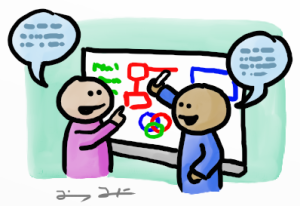
Instead of airing your frustration about the neighboring team and initiating an email battle, walk over to them and problem-solve the situation in front of a whiteboard. Ask the person with the frustration to draw the problem on the board and then ask him about the various ways the problem can be fixed. Very simple, extremely effective.
Have a coffee before kickstarting improvements
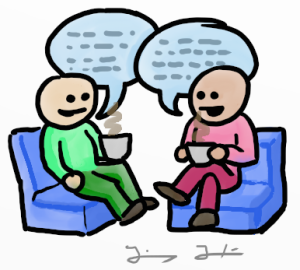
You have this nagging improvement you want to see in a neighboring team. Instead of pushing it right away, start by having coffee with the people involved. Getting to know the people is the key to addressing the problems.
Take a daily stroll through the development team’s area
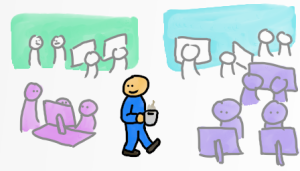
I learned this trick from an awesome DBA. I was amazed by his situation awareness and how he always was on top of which problem to solve first. His trick was to take a daily walk through the development team areas and ask how each team was doing. This nurtured a good rapport with the development teams and ensured Q&A’s never got sent as support tickets.
Ask “So what should we focus on?” before ending meetings
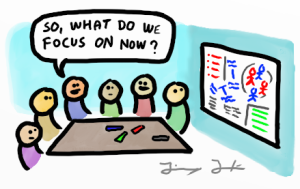
Meetings represent the black hole of software organizations. They tend to suck you in and won’t let you leave (even if you wanted to). In meetings, people air what they are doing and what they are seeing, but rarely voice their views on what should be happening. So at the end of the meeting, be sure to ask, “So what should we focus on?” to ensure that everyone is on the same page with a common focus.
Put slack into your calendar
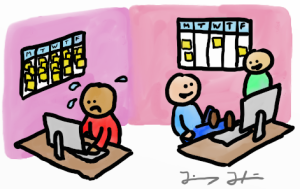
That’s right. Put 1 hour of slack time into your calendar. Do it right away. Use the time to reflect, fix those small annoying tasks that never get done, or just talk to people.
Improve the existing process – draw it on a whiteboard
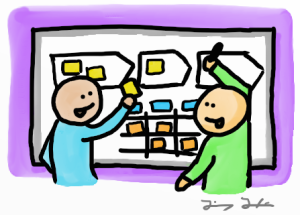
Too often, improvements are kicked off by looking at a model, a process invented by someone, or by copying what someone else has been successful with. The very simple trick of driving improvements can be accomplished by:
- Asking the team to draw their process on a whiteboard.
- Asking them to annotate their challenges by writing them down on post-its and placing them on the right place on the process.
- Asking them to annotate their opportunities by using another set of post-its in a different color.
- Picking the top 2 improvements from the board and implement them.
Sounds simple? What you’ll notice is that the team will struggle with drawing their process in the first place because people will have divergent opinions first. By drawing together, you create a shared baseline on top of which the team can build their improvements.
Show appreciation
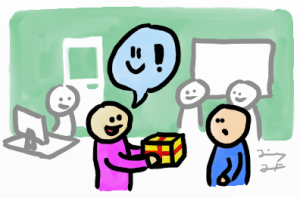
Product development in software is riddled with problems. When someone takes an initiative, acknowledge it and show your appreciation openly. A mention and a respectful nod will do. This builds energy and can be one of those seemingly small things that kickstarts a positive atmosphere.
Walk through your tasks before a standup
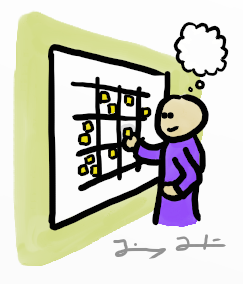
Do you use a Kanban board? By asking people to update themselves on their tasks 5 minutes before your standup meeting, there will be better flow and less ‘ums’ and ‘where-are-my-post-its’.
Help me to help you
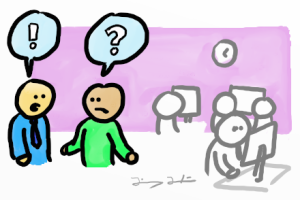
Swamped with tasks? Effective people learn to focus. Learn to say “no” gently but firmly by explaining the other things on your plate that have higher priority. This builds trust. A small trick is to avoid picking up broad sweeping tasks from meetings. You should suggest that they be clarified first (a good question to ask is “Can you give an example of what the world would look like if we addressed it?”) Finally, if someone desperately wants your help and your WIP is full, ask, “How can you help me to help you?”
Be concise when reporting information
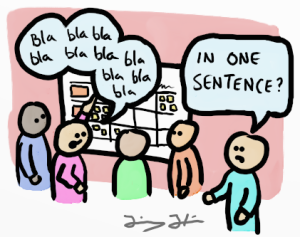
When reporting, or speaking out in team environments, Agile people keep information to the essentials relevant to the topic. A simple way to structure your communication is through (observations, insights, blockers and proactive measures).
Suggest improvements as small experiments
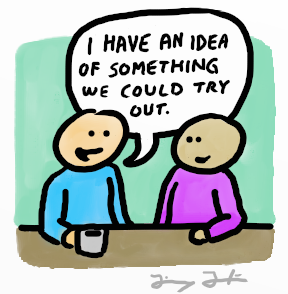
Want to borrow a member from another team or try a different approach? Instead of suggesting a change (which can be perceived as permanent), suggest it as an experiment. Walk through:
- Why
- What outcome you hope to see
- When and for how long it would take place
By making small experiments instead of insisting on big sweeping improvements, you’ll get more people along for the ride.
Ask “What can we do right now to make this a bit better?”
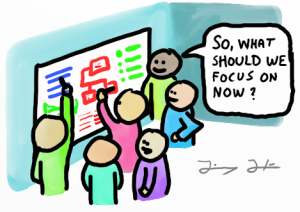
The most effective Agile teams and people I know of always ask this question. By doing so, they leave meetings with a clearly understood action plan and a sense of “we are doing something about it”. Each action may seem insignificant on its own. But when all these actions are compounded over time, they make a huge difference. The most noteworthy is a difference in mindset – it instills a sense of confidence that “we can change anything!”
There you have it, 12 seemingly normal things Agile people do that can make a big difference, one improvement at a time.
Thanks Faraz for asking the question!
Ps: The illustrations were made by our visualisation ‘meastro’ Jimmy Janlén. Make sure to check out his excellent new book “Visualisations examples”.